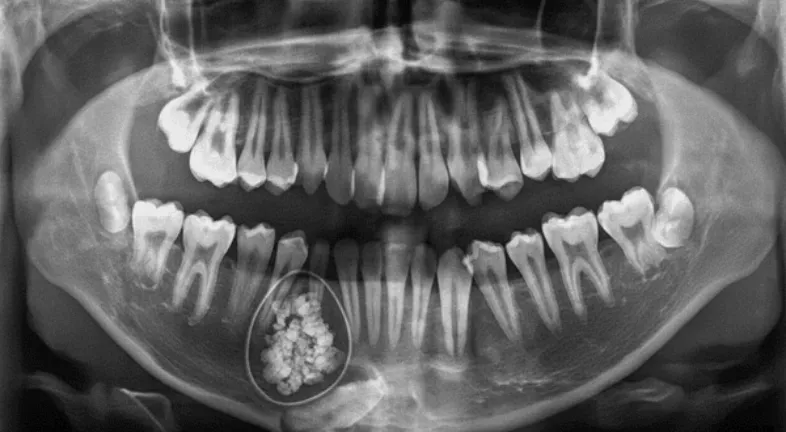
Table of Content
Living your life with Aligners can make you think about the day where you will be living your life Aligner free, and your teeth are freed from their metallic prison. If you still wear braces every day, you may spend a lot of time waiting for the moment when you can finally remove them. The one thought that kept you going while wearing braces might have been the day the braces are removed and you can see your gleaming smile and perfect teeth with a new lease of life.
Unfortunately, even after Clear Aligner treatment, people can have what is called “teeth relapse,” where the teeth start to go back to their original positions. Undergoing any orthodontic treatment is a big commitment, and the last thing anybody wants is for their teeth to move back after months, or even years after any Clear Aligner or dental treatment, making the entire time you wore them pointless and frustrating. In this article you will learn how to avoid teeth relapse after braces so you can get the full benefits.
Patients who undergo Aligner treatment, unfortunately, can have a relapse where the teeth move back. It is quite common that people experience their teeth moving back to the original position when the treatment has been completed. Sometimes referred to as “Aligner relapse,” the teeth will move back to their pre-treatment position. This is where managing the relapse becomes so important. As the lower front teeth or upper front teeth begin to move back, the frustration felt by someone having undergone this treatment is understandable, but why is this?
Any orthodontic treatment like braces is very effective in moving teeth to align them so they look aesthetically pleasing. Clear Aligners are worn until the teeth are moved to the desired position, and they are removed. However, any treatment is ineffective at moving the ligaments which connect the teeth to the jawbone. Once the brace is removed, the elastic ligaments (which stretch much like elastic during the treatment) can pull the teeth back into their original positions which trigger the Aligner relapse. Throughout the entire time where you wear Clear Aligners to move the teeth, the ligaments can relapse in a wide variety of different ways. Some can move back to the original position and some may only move slightly, but it has been known to affect most people in a multitude of ways.
While Aligner relapse is a common occurrence, it can be treated easily. The most common treatment method is through orthodontic appliances known as retainers. Retainers are similar to braces but work to hold your teeth in a new position. They come in two different types, fixed and removable.
Fixed retainers are, as the name suggests, fixed to your teeth. They come in three different types: labial, lingual, or wired. Labial braces have brackets attached to the teeth on the lip side; lingual braces have brackets attached onto the tongue-side of the teeth; and the wired retainer is flexible wire without any brackets, which are attached onto the tongue side of the teeth.
Removable retainers are not fixed. Springs may be used to keep the teeth aligned and are usually made of acrylic. Some removable retainers have invisible wires fixed onto the inner side of the teeth, which prevents the teeth from “re-moving” after Aligner treatment.
When people need to wear a retainer they usually need to have it on for the first 6 months whether they are awake or asleep, only removing it to brush their teeth, and at least for 20 hours a day. But after the first 6 months, there is a high chance you will only need to wear it while you are asleep. However, it is likely you will need to wear a retainer for many years to reap the benefits.
What you need to remember after undergoing Aligner treatment:
It is an incredibly frustrating thing if your teeth start to move back to their original position, especially after months of wearing braces. But many patients don’t like the idea of having yet more treatment to restore their teeth especially when it comes to braces. But, unfortunately, teeth relapse is all too common and the best approach is to wear retainers like Clear Aligners that are discreet that can straighten teeth after teeth relapse effectively.
Avoiding teeth relapse isn’t just about maintaining good oral hygiene or being observant of your teeth, but it’s about being ready to strike if there are any signs of teeth relapse. The longer a person goes without fixing their relapse, the more difficult it is to restore their teeth to their former glory. If you’ve gone to the effort to straighten your teeth only to have them move back, it can be frustrating after all that hard work. The lesson is simple: if you want to have a beaming smile, with all of your teeth in the right place, it’s important to follow the instructions to the letter. As we all take pride in our teeth or shy away from showing that one tooth that looks a little bit out of place if we undergo a course of Clear Aligner treatment, you can prevent our teeth going back to their old positions.
Curated the best for your knowledge
 Odontomas: What They Are and How They're Treated
Odontomas: What They Are and How They're TreatedSome dental conditions are quiet. Too quiet, in fact. Odontomas fall into that category. They rarely make noise, yet they change things beneath the surface. And people usually have no idea about them. While malocclusions, teeth shifting, discoloration, or other cosmetic dental issues are fairly well known, odontomas are not. So, an odontoma is technically a type of tooth tumor. It’s benign, harmless, but oddly structured. Hence, it can interfere with tooth eruption, displace teeth, or cause swelling. However, there’s more to it. Here’s a deeper dive.
Read More.webp) Gingivitis Treatment: How to Reverse Early Gum Disease
Gingivitis Treatment: How to Reverse Early Gum DiseaseGingivitis tends to creep up quietly, usually after a stretch of rushed brushing or nights where flossing just slips your mind. The first sign is often bleeding when you spit toothpaste into the sink. That moment makes people Google how to cure gingivitis, which is honestly the right instinct. Early gum inflammation happens because plaque irritates the tissue around the teeth. If you respond quickly, it is fully reversible. Most cases improve quickly with proper cleaning, hydration and small tweaks in daily habits. The key is not ignoring those early red or puffy gum signals.
Read More.webp) Metallic Taste in Mouth: Causes and How to Get Rid of It
Metallic Taste in Mouth: Causes and How to Get Rid of ItHaving metal taste in the mouth first thing in the morning can be an unexpected experience. You wake up, take a swallow, and suddenly have a metallic taste in your mouth, as if you'd been chewing on a handful of change. It's annoying, a little scary, and sometimes for no apparent reason. For some people, it will be nothing but a minor nuisance; others may fall into the late-night goose chaser. Sometimes it's a sign that there is something wrong with your braces; other times, it could mean that there is something wrong with one of your teeth. But here's the good news: Most metallic tastes are temporary, harmless, and can be treated or resolved. So let's take a closer look at the possibilities.
Read MoreQuick Links

Heading